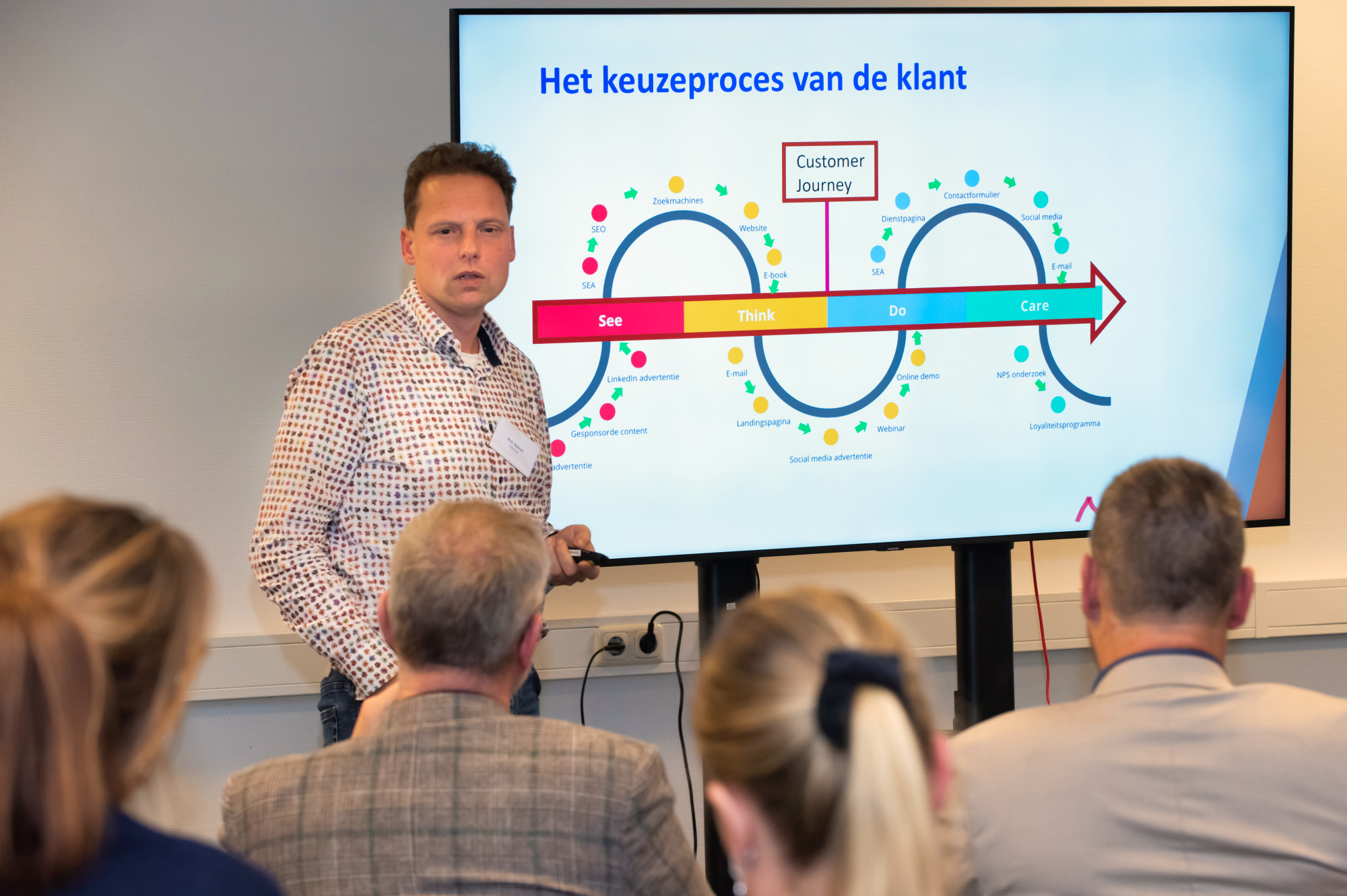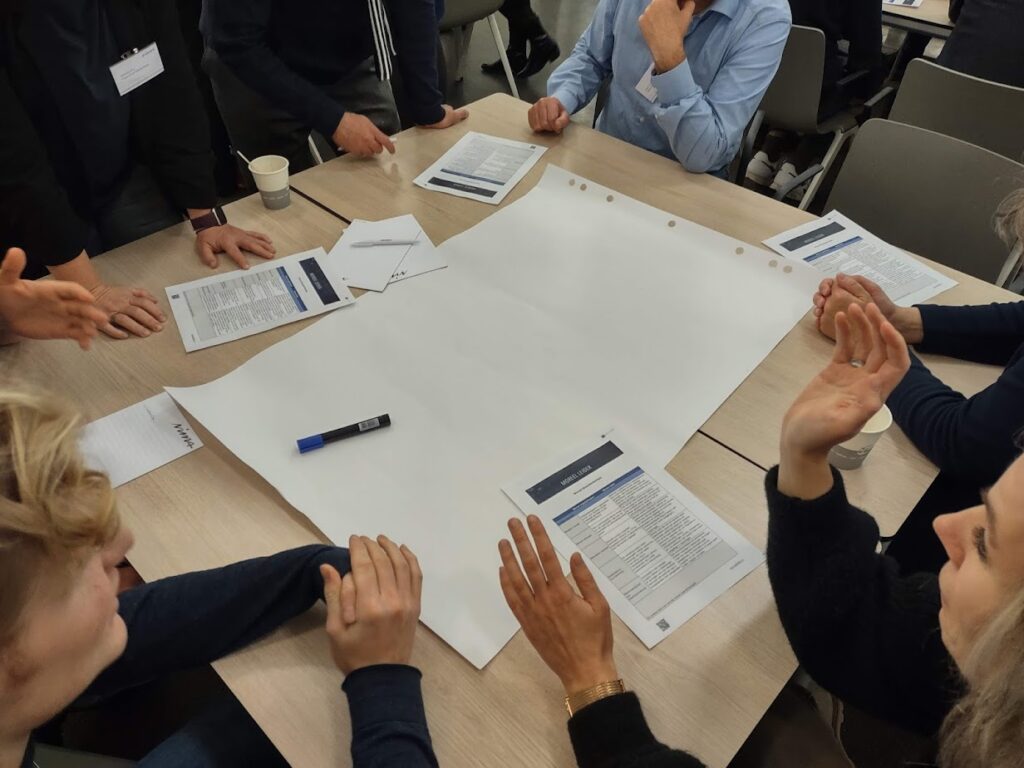
‘The social dilemma’ evokes significant outrage. Media and politics have paid considerable attention to the dangers of big tech. However, five years ago, the documentary ‘what makes you click’ already demonstrated how platforms like Facebook, Instagram, and YouTube employ techniques borrowed from the gambling industry to keep us ‘glued’ to the screen. Since then, filter bubbles and privacy breaches have also emerged. We adress this, and how to change it, in this workshop Moral Leadership.
Workshop Moral Leadership with NIMA regio Oost (region East)
After our Hot Topic in the Marketingfacts Yearbook and a presentation to a full audience at NIMA Marketing Day 2021, we conducted a workshop at Windesheim University on Thursday, November 4th, starting at 5:30 PM. During this session organized by NIMA East region, over 30 students, teachers, and professionals from the business community experienced how to think and act as ethical marketing leaders. We approached this from the perspective of a moral values compass. Below is a brief retrospective.
Moral Leadership and her story
During the first hour, we took the participants on a journey into the concept of moral leadership.
- Why is it important to pay attention to moral leadership?
- What are the benefits for individuals, organizations, and society?
- How does moral leadership help prevent accidents and negative publicity?
- Instances where things went wrong (such as the benefits scandal and the social dilemma)
- The importance of setting appropriate goals and understanding the impact of algorithms
- Examples of organizations that are already fulfilling the role of moral leaders
Below is a short excerpt from the presentation during the workshop for NIMA East region at Windesheim University.
To break free by not doing exactly that.
A first step for a moral leader is to “press the pause button.” This means not immediately reacting to a situation or stimulus, but rather taking a step back to consider the consequences. It involves reflecting on how those anticipated consequences align with one’s own values and translating them into actions.
To practice breaking free from the “action-reaction mechanism,” we engage in an exercise of drawing how your organization scores on a component of the moral values compass and what your objective is, without lifting the pen from the paper. This exercise requires careful consideration before each stroke.
This exercise and the ensuing discussion with their fellow participants provide the participants with a list of do’s and don’ts. This helps make their brand more appealing to customers, employees, and media platforms. The do’s and don’ts naturally emerge during the workshop. Together, they contribute to building a society in which we ourselves would like to grow old, and where we would like to see our children grow old.

Experiencing “slow” thinking and collaboration
The workshop allows participants to “experience” slow and sensitive thinking. Creating an environment where everyone feels comfortable is crucial in this process. That’s why we started the workshop with a warm meal. Sharing food brings people together, and when you have a satisfied appetite, you are more open to different perspectives. Many attendees stayed afterwards to engage in further discussions, networking, and enjoy drinks and snacks.

